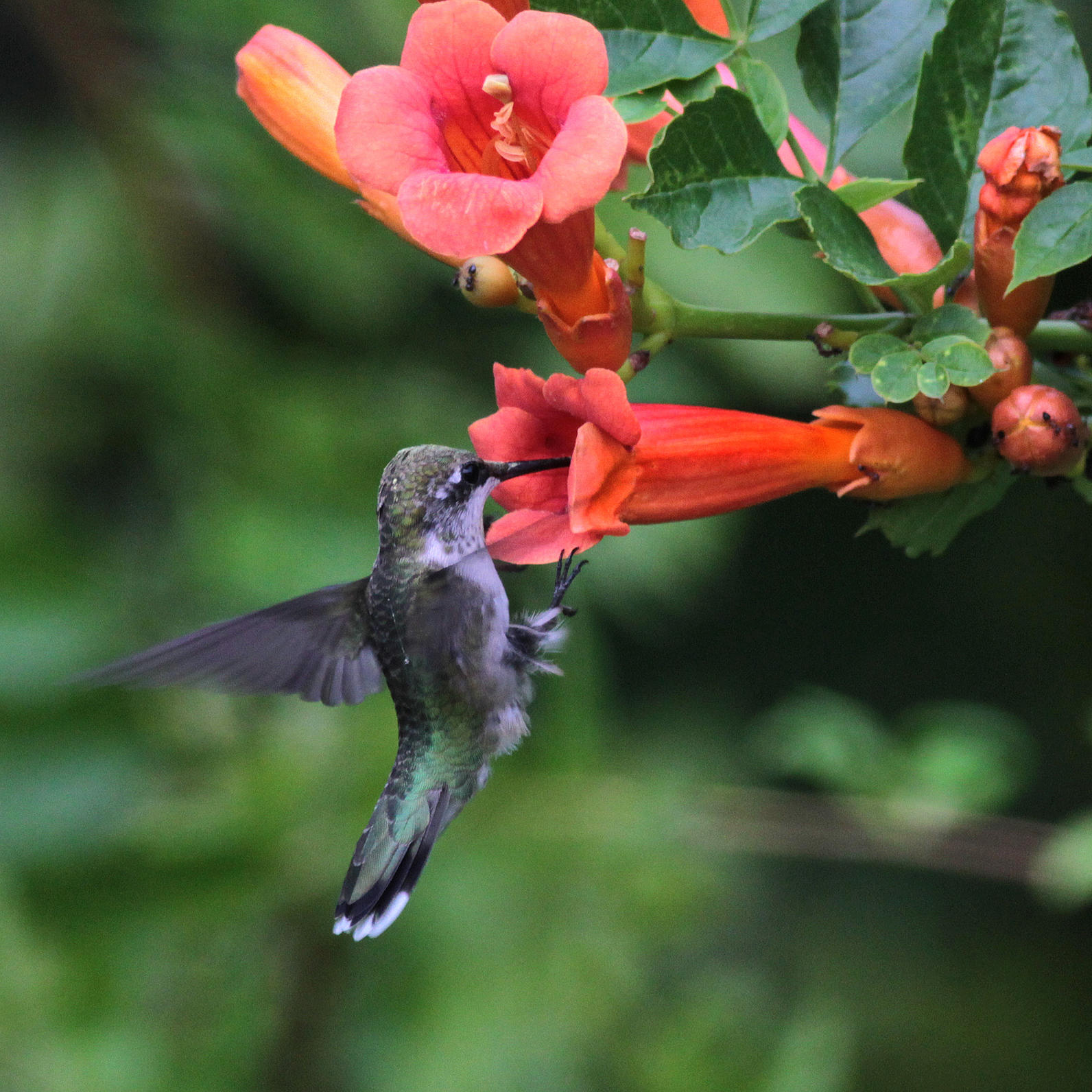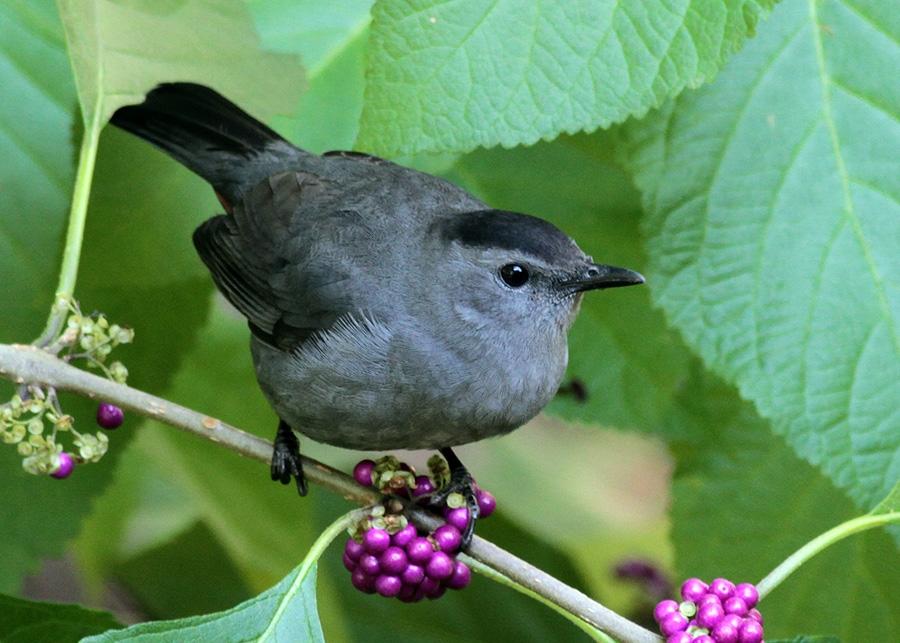Your yard - and the kinds of plants in it - matters more to birds than you may know. Native plants play a very important role in providing the food birds need to survive and thrive in a way that non-native plants cannot do. In his book, Bringing Nature Home, author Doug Tallamy touts the benefits of gardening with native plants to all birds and wildlife.
Recently, Tallamy was featured during an event co-hosted by Cape Fear Audubon Society in Wilmington. Read on to enjoy a special interview by Charley Winterbauer, President of Cape Fear Audubon.
Doug Tallamy is the author of Bringing Nature Home, co-author with Rick Darke of The Living Landscape, and an entomologist at the University of Delaware.
1. Since your book was published, have the results exceeded your expectations?
Yes! Yes, they have by a lot. I actually didn’t think anyone would read the book, at all, so they have read it and seem to be passing it on, so I am pleased.
2. What would you like to see happen in the next 5 years?
I would love to see enough people get interested in reducing the size of their lawn so we could actually see the home-grown national park come into effect…make that 20-million-acre park out of half the lawns we now have.
3. What do you think is the most bird-friendly plant species?
White Oak. Although, I am going to say that Black Cherry is a close second because it produces an awful lot of caterpillar bird food but also has berries, whereas oaks do not.
4. What constitutes 'junk food' for birds?
The berries produced by these Asian plants. They are producing high sugar berries in the fall instead of high fat berries. If that doesn’t fit the definition of junk food, I don’t know what does.
5. Who is/was your most important mentor?
E.O. Wilson. Long before I got into this, he was leading the way in the whole biodiversity movement; he wrote the first books on it. He wrote Sociobiology, which I teach. And of course he is an entomologist. He wrote The Insect Societies. He started a number of different fields. A true scholar.
6. What is the most important pollinator most people have never heard of, at least in that role?
All of the specialist native bees. Most of them are small, people have never heard of them, but they comprise most of the 4,000 species of native bees we have and there are a number of plants, Spring Beauties for example, that are pollinated by one species of Apoidea bee. That is the only thing it pollinates. You wouldn’t have Spring Beauties without that bee. Goldenrod has 11 or so specialist bees that only pollinate Goldenrod.
What we see in the generalist bees flying around is that many of them are just flower visitors and not pollinators.

7. What one common habit of most Americans would you change if you could?
I would change the status symbol of the lawn. Get people to see it as a place to walk not as something to look at as vast acreage.
8. How can we encourage lightning bugs in our yards?
We need to do a few things. You need leaf litter because that is where the larvae live. You can’t put pesticide down because then you are killing them and they like edge habitat so they like some woody plants. So if you have no woody plants you are not going to have lightning bugs. You know they communicate with their flashes, so if you light up their entire environment they are not going to communicate.
9. How do we create a space for ground-nesting bees in our yards?
Ground nesting bees like a very slight southern slope of soil that is easy to dig in. Clay is tough and they like little patches of bare soil. I say that cautiously because bare soil is not good for the plants. I am not talking about a patch the size of your table here but a little patch, but a little tiny south-facing slope. They will find that.
10. Does outdoor lighting affect insect populations?
Yes, particularly moths and those powerful lights that draw them in. The Saturniids [a family of large North American moths including the Luna Moth and Cecropia Moth] that are drawn into the security lights and never leave. A lot of these moths don’t eat as a moth, and so they emerge as an adult with all the energy they have and if they spend it all flying around light then they run out of energy and that’s that. It’s also a place where the bats come and pick them off. So these night-time lights are death traps for moths and many other insects too.
12. With the tremendous scale of damage being done to our area each day, how might individuals prioritize what they do to their yards? What actions would make the most difference?
You know if we could get people to see their property as more than a decoration and as a vital part of their local ecosystem, that is a key to get them to join into ecosystem function instead of destroying it. That’s simply accepting the fact that, you know, it is not natural to have humans one place and nature someplace else. We’ve got to start to blend the two. Just realizing that they actually have an important role in conservation is probably the biggest thing we need to do.
13. Do you have a favorite book, non-fiction or fiction that inspires you?
Can I go way back in time? The book called All About Snakes. I was in third grade, I discovered that book. I must have read it 50 times. That was my first really close encounter with nature and I loved snakes back then. I didn’t know anything about insects, but that hooked me so you can expand your interest to other types. If we can have informative books that get our kids interested in nature, it follows them the rest of their life and that certainly was the book for me.

14. How do you think climate change could affect insect diversity and distribution?
If climate change drastically changes plant diversity and distribution it will certainly impact insects but I am going to say something contrary to what everybody else says. Insects are highly adaptable, so in the long term they will be able to adapt to a warmer or more variable climate.
Although we can say crazy weather patterns like long periods of heavy rain and abnormally cool weather in the spring are very hard on insects, they bounce back but it is very hard. So abnormal weather at the wrong time of the year can knock populations down. Some always survive, and those are the ones that are passing on their genes. So I am less worried about insects weathering the change than plants that can’t move. It’s harder, and we’re changing things too quickly.
15. In your opinion, what are some really fascinating but little-known insect-plant adaptations that the general public might be able to see if they looked a little more closely?
A really good one for that is if you watch Monarch butterflies [caterpillars] avoid the sticky latex that’s in milkweed. That latex sap that gums up their mandibles. If sap gets on their mandibles it gums them up, they starve to death, and they can’t eat anymore.
They crawl to the end of the leaf and taste it. If any sap comes out they stop eating right away and they go back three-quarters of the way on the leaf and they chew through the midrib three quarters of the way. That actually flags the leaf but that blocks the flow of the sticky latex sap, and then they can eat the entire leaf below where they’ve chewed it. Sometimes they will do the petiole [leafstalk] so they get the whole leaf. All you have to do is find a monarch [caterpillar] and put it on a new leaf and watch it do that.
Audubon North Carolina’s Bird-Friendly Communities initiative is a partnership program involving more than 20 organizations whose mission is to create a more bird-friendly North Carolina. This vision statement guides the goals and projects of the group: “Bird-friendly communities give birds the opportunity to succeed by providing connected habitat dominated by native plants, minimizing threats posed by the built environment, and engaging people of all ages and backgrounds in stewardship of nature.”



